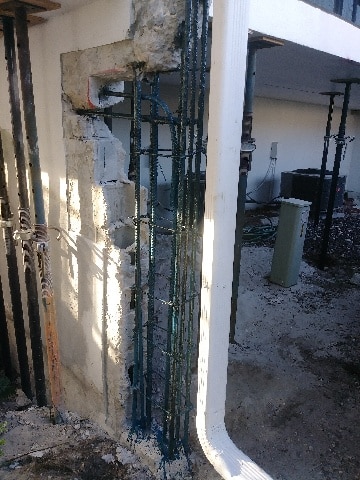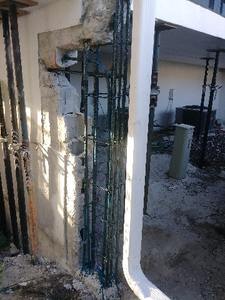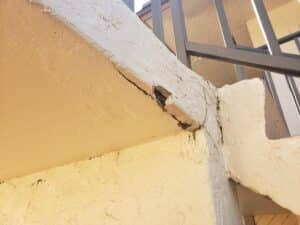Understanding the intricacies of concrete restoration is vital for maintaining the structural integrity and aesthetic appeal of buildings, particularly those subjected to wear over time. At our company, we specialize in bringing concrete structures back to their original strength and functionality, using a blend of advanced materials and proven techniques tailored to each project’s specific needs. Concrete restoration isn’t just about fixing what’s visible; it involves diagnosing underlying problems and applying comprehensive solutions that prevent future damage.
Concrete is a durable material, but it is vulnerable to certain types of damage, including cracks, spalling, and water infiltration. These issues, if not addressed promptly and effectively, can lead to more significant structural problems, compromising the safety of the building. We employ a systematic approach to each restoration project, starting with a detailed assessment of the damage, followed by the selection of appropriate repair materials and methods. Our goal is to restore not only the strength of the concrete but also to enhance its resistance to future wear, ensuring a longer lifespan for your building.
In this guide, we’ll walk you through the critical phases of concrete restoration—from identifying the common issues to applying the latest repair techniques. By understanding these key steps, property owners and managers can better oversee and implement maintenance programs that keep their infrastructure robust and resilient.
Identifying Common Issues in Concrete Structures
A critical step in concrete restoration is accurately identifying the issues that compromise structural integrity and aesthetic appearance. We encounter various common problems, ranging from cracks due to thermal expansion and contraction, to corrosion of steel reinforcement within the concrete, known as spalling. Observing these issues early is key, as they can escalate into major defects if left unchecked. Moisture ingress is another significant concern, particularly in environments exposed to heavy rainfall or high humidity, leading to deterioration and mold growth. Our team is trained to detect these issues swiftly and provide evaluations that help us move forward with the most effective restoration strategies.
Equally concerning are surface-level problems like scaling, flaking, and crazing, which affect the concrete’s outer layer but can signal deeper structural issues. By addressing these promptly, we not only restore the concrete’s strength but also its visual appeal, which is vital for maintaining the property’s value. Each project begins with a thorough assessment, using tools and techniques that allow us to peer beneath the surface and diagnose the root causes of visible symptoms.
Key Materials for Effective Concrete Restoration
Choosing the right materials is paramount for ensuring the success of any concrete restoration project. We leverage advanced, high-quality materials specifically designed to address and repair the varying types of concrete damage. Hydraulic cement, for instance, is perfect for patching water-related issues due to its fast-setting and water-resistant properties. For areas suffering from structural cracks, epoxy injections are our go-to solution for sealing and reinforcing, providing both strength and flexibility to accommodate minor concrete movements.
Furthermore, for surfaces facing constant exposure to harsh conditions, polymer-modified concrete offers an enhanced durability, adhering better to existing structures and resisting common problems like cracking and scaling. Our selection process involves not only matching the right materials to the damage but also considering the environmental impact and sustainability of these products. This thoughtful approach ensures that our restoration efforts are not only effective but also environmentally responsible. By using the best materials available, we extend the life of concrete structures significantly, making them safer and more durable.
Step-by-Step Restoration Techniques for Durable Concrete
Restoring concrete to its original strength and appearance involves a series of careful steps, each tailored to address the specific degradation it has suffered. We begin by preparing the damaged area, which often includes removing loose or deteriorated concrete. This step is crucial as it ensures the new materials bond effectively with the old structure. After preparation, we treat the exposed reinforcement bars with rust inhibitor to prevent further degradation and ensure structural integrity.
Next, we apply the selected repair material, such as hydraulic cement or epoxy resin, according to the type of damage addressed. This is done diligently to avoid forming air pockets which may later lead to weaknesses. For deeper cracks or structural discrepancies, we employ rebar or fabric mesh to reinforce the area before the overlay is applied. Once the repair material is set and cured, we perform finishing touches like sanding and sealing, which not only enhance the aesthetic of the concrete but also provide an extra layer of protection against environmental elements.
Preventative Strategies to Protect Restored Concrete
After restoring concrete, implementing preventative measures is key to extending its lifespan and maintaining its functionality. We typically apply a waterproof sealant tailored to the climate and exposure of the concrete. This sealant acts as a barrier against moisture, dirt, and chemicals, preventing the onset of damage from these elements. For areas that experience freeze-thaw cycles, we ensure the use of sealants that can expand and contract without cracking.
Regular maintenance checks are another vital component of our prevention strategy. We educate our clients on what to look for and recommend scheduled inspections to catch and mitigate minor issues before they escalate into major problems. Additionally, we advise on proper cleaning techniques that do not involve harsh chemicals or abrasive methods, which could damage the sealant and exposed concrete.
Restoring and maintaining concrete structures requires expertise, precise application techniques, and ongoing care. Our commitment at McLeod’s Contracting Solutions is to provide comprehensive solutions that not only restore buildings but also protect them for the years to come. If you need professional help with concrete restoration or wish to learn more about proper maintenance practices, reach out to us today. We are here to help ensure your structures remain safe, functional, and visually appealing for as long as possible.







